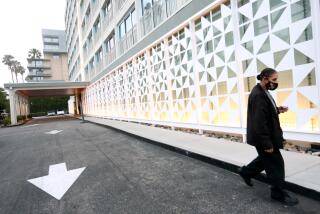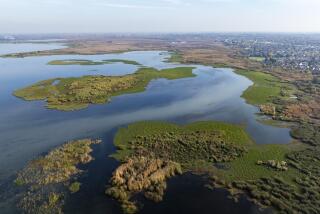The future of the Ballona Wetlands
Over the course of two centuries, the Ballona Wetlands have, more or less, survived grazing cattle, Howard Hughes and Marina del Rey. Now, nearly a decade after the state acquired the 640 acres of the Ballona Wetlands Ecological Reserve that stretch from Westchester to the marina, the cherished preserve may finally be getting the substantial restoration it needs and deserves. The Annenberg Foundation has agreed to put up at least $50 million to build an interpretive center in the wetlands and help with the restoration of the land around the center. The agreement is laid out in a memorandum of understanding among the California Department of Fish and Wildlife — which controls the wetlands — the state’s Coastal Conservancy, the Santa Monica Bay Restoration Commission and Annenberg. The state is in the early stages of an environmental review of the restoration plans for the wetlands.
As with many preservation projects, passionate advocates disagree deeply on how best to map out the future: An interpretive center or no interpretive center? If yes, should it be located on the edge of the preserve or outside the preserve? Should the fragile wetlands be repaired by hand or by machine? Preservationists don’t even agree on just how degraded the wetlands are. Some stalwart defenders of the wetlands, including the nonprofit Ballona Institute, see Annenberg’s plans as an effort to manicure a historic marshland into another pretty Westside park and, in the process, destabilize or possibly destroy its delicate ecosystem.
But Annenberg’s ideas seem reasonable. The egregious violations of the wetlands occurred over the last few decades. The wetlands have sometimes been treated like a big vacant lot. They were the dumping ground for acres of soil excavated to create Marina del Rey and its developments. Hardy volunteers routinely clean up all sorts of litter. Homeless have sometimes set up encampments.
The restoration process is just beginning. There are no architectural plans; no bulldozers have moved an inch of earth yet. There will be a draft environmental impact review, opportunities for public comment, a final environmental impact review and, no doubt, plenty of disagreement along the way. With luck, there’ll also be collaboration among all the groups that have invested their time and energy into protecting the Ballona Wetlands. (And no, the foundation is not planning to build a restaurant, as some have feared.)
This should be a transparent process. Foundation officials are moving forward in a thoughtful way, but they should remember that they are not buying the wetlands. This is public land, purchased by the state to save it from destruction through development. The foundation should make public all of its proposals and be open to intelligent alterations.
Ballona should be a rich habitat for wildlife as well as a place for people to visit. This is an opportunity, not a travesty.
More to Read
A cure for the common opinion
Get thought-provoking perspectives with our weekly newsletter.
You may occasionally receive promotional content from the Los Angeles Times.






